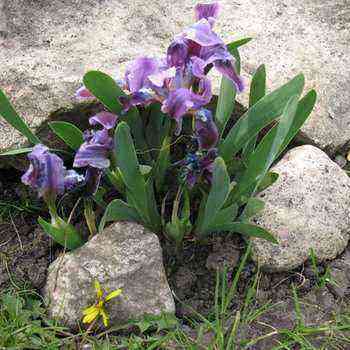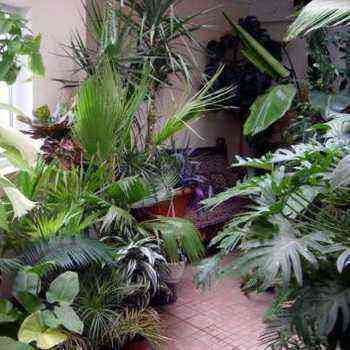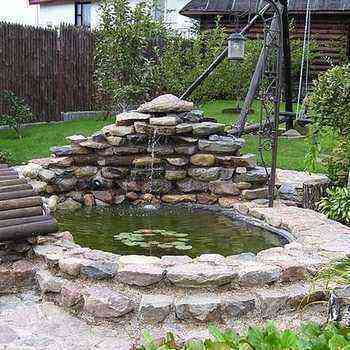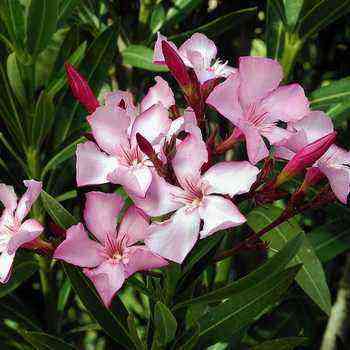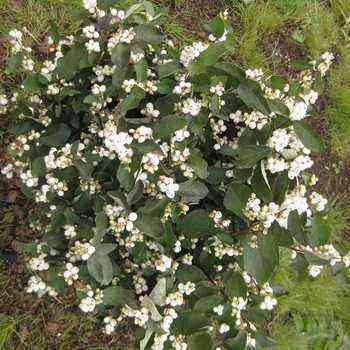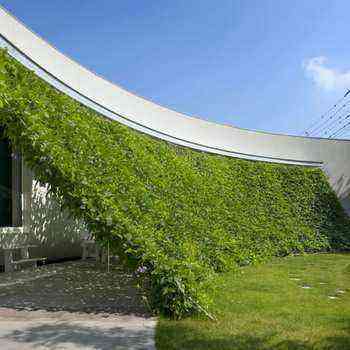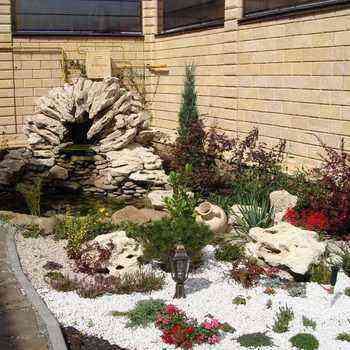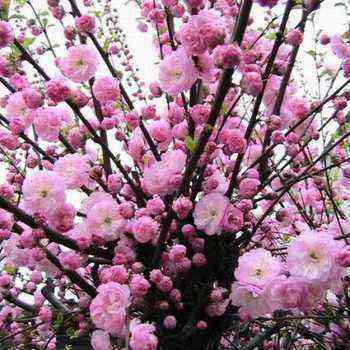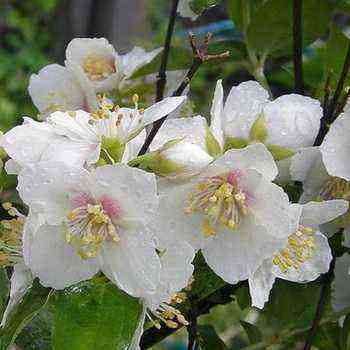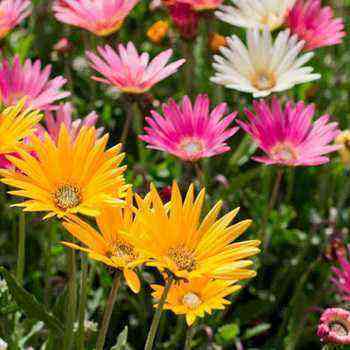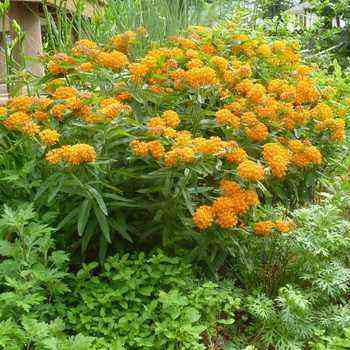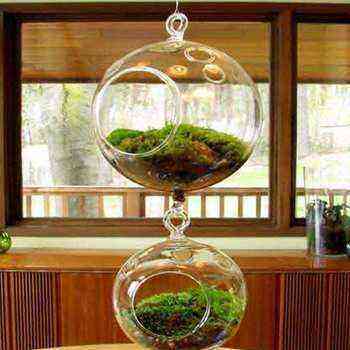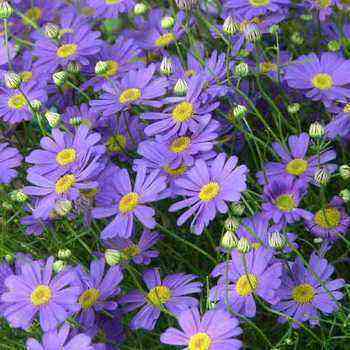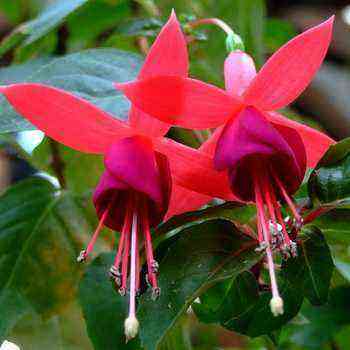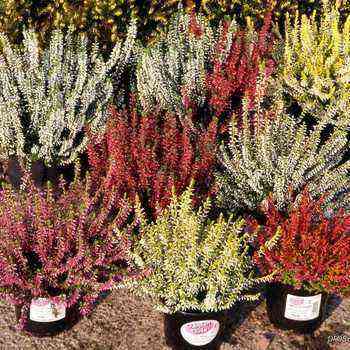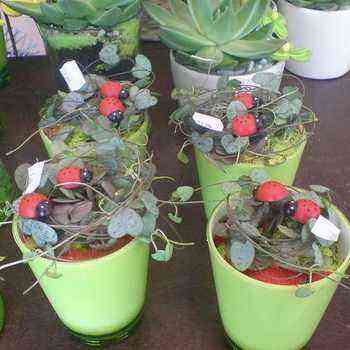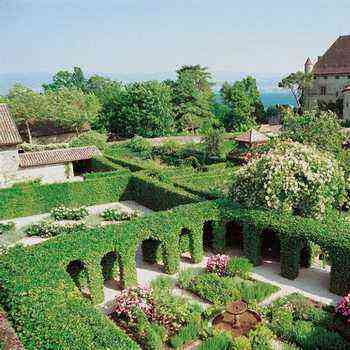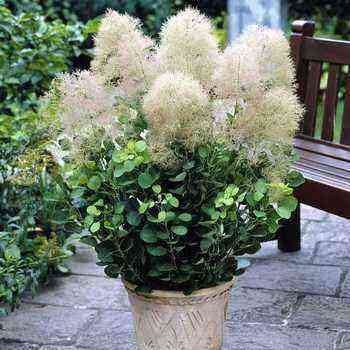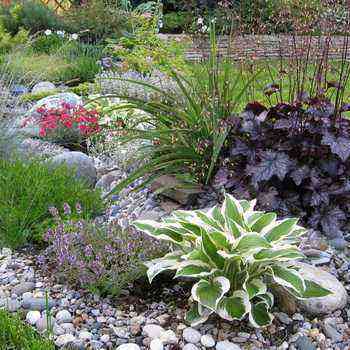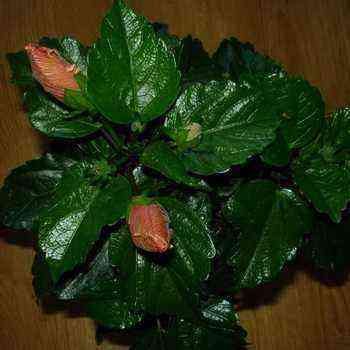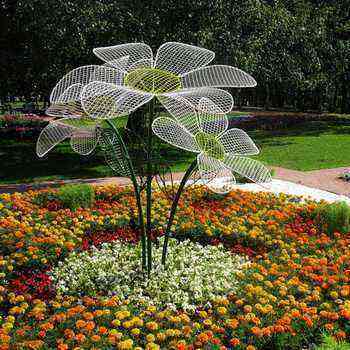 Cochia (lat. Kochia) – a dense lush bush with unusual foliage that seems light and weightless. It is part of the Marevye family. Naturally grows in Europe, Asia, North America and Australia. Serves for decorating empty spaces in the garden, decorating the local area. It is appreciated for its original appearance and unpretentiousness to growing conditions. It bears the second name “summer cypress”.
Cochia (lat. Kochia) – a dense lush bush with unusual foliage that seems light and weightless. It is part of the Marevye family. Naturally grows in Europe, Asia, North America and Australia. Serves for decorating empty spaces in the garden, decorating the local area. It is appreciated for its original appearance and unpretentiousness to growing conditions. It bears the second name “summer cypress”.
Description
Kohia – a perennial or annual ornamental-deciduous plant, which can be represented by a shrub or a semi-shrub with a pyramidal crown. On average, it reaches 50 – 80 cm. Consists of a large number of thin flexible, highly branching bright green shoots. The central stem lignifies over time and acquires a dark color.
The leaves of this culture are narrow, linear, reminiscent of needles, have a slight pubescence. In young plants, the foliage is light in color, but after a couple of months it acquires a bronze or pink color. Due to the similarity of leaf blades with spruce needles, many gardeners mistakenly consider kochia to be a coniferous culture, which is wrong.
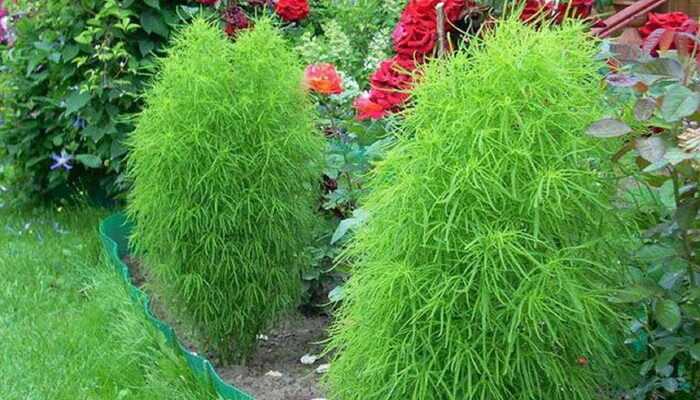
When describing the kochia plant, it is worth noting that its flowers are collected in paniculate inflorescences, are formed in leaf axils, differ in miniature size, and do not have decorative value.
As a result of pollination, which occurs with the help of the wind, fruits are formed on the bush – nuts. Each nut contains one large seed. The germination capacity of kochia seeds lasts for 24 months.
Species and varieties
The Kokhia genus includes 8 dozen varieties, some of which are cultivated in the southern and middle latitudes of Russia.
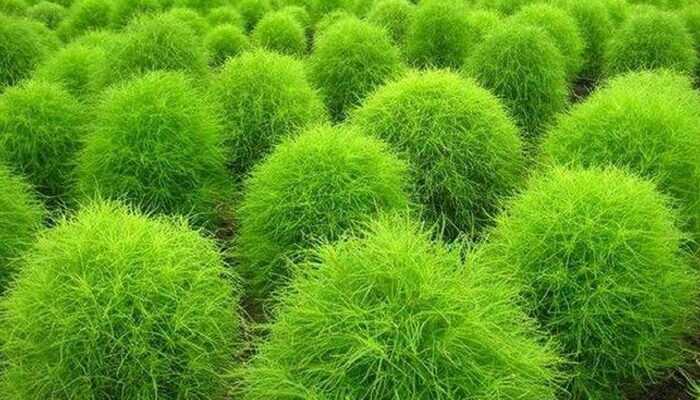
Coronal. A lush shrub 60 cm high with a rounded crown consisting of numerous branches covered with soft, threadlike foliage of bright green color. By autumn, the leaves become burgundy, due to which the plant looks very bright and attractive until mid-autumn and longer.
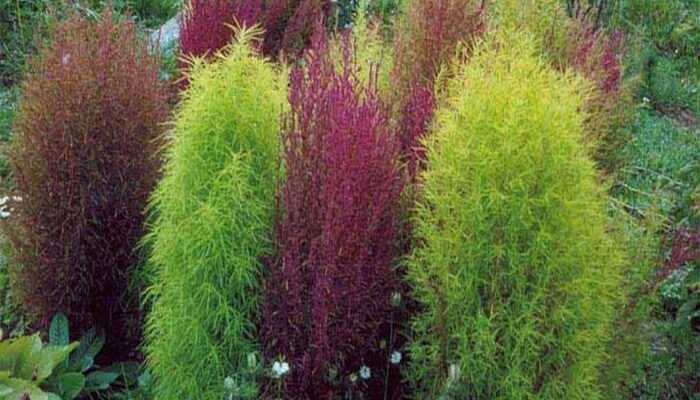
Hairy. Has a pyramidal crown. The height of the stems is 70 cm. The leaves are acicular, soft, pubescent. In the summer they are green, by the fall they turn purple.
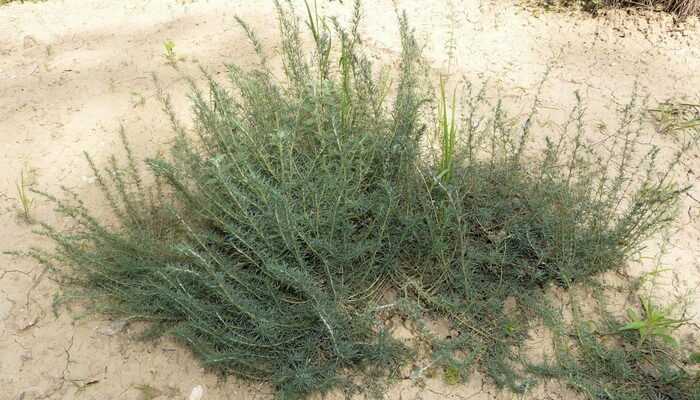
Creeping. Perennial with a large number of shoots branching from the base, lying on the surface of the earth, reaching up to 0.7 m in length. Leaves are acicular, short, tough, covering the central part of the stem. Plant height does not exceed 20 cm.
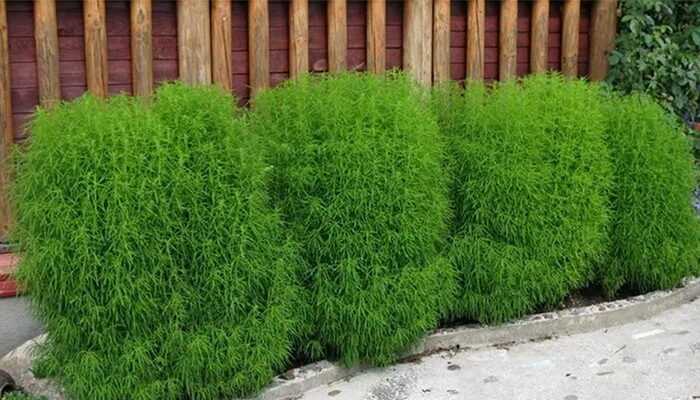
Childs. A spherical shrub 0.5 cm high, which forms thin branching, leafy stems. The leaves are soft, needle-shaped, rich green, do not change color.
On the basis of the above-described species, breeders have obtained interesting varieties of kochia. Among them:
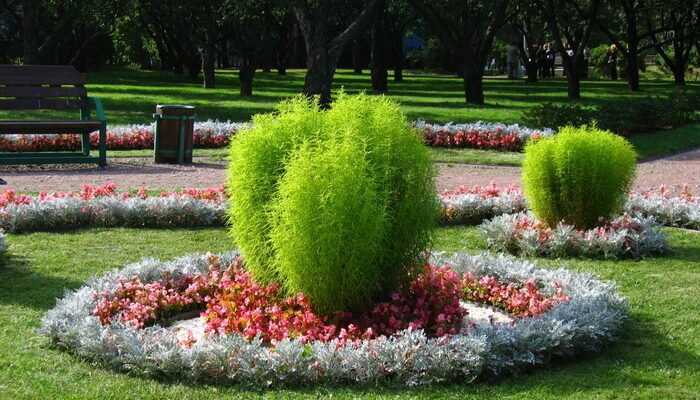
“Sultan” – a plant with a pyramidal crown, up to 100 cm high. The foliage changes color from green to bronze by the beginning of autumn.
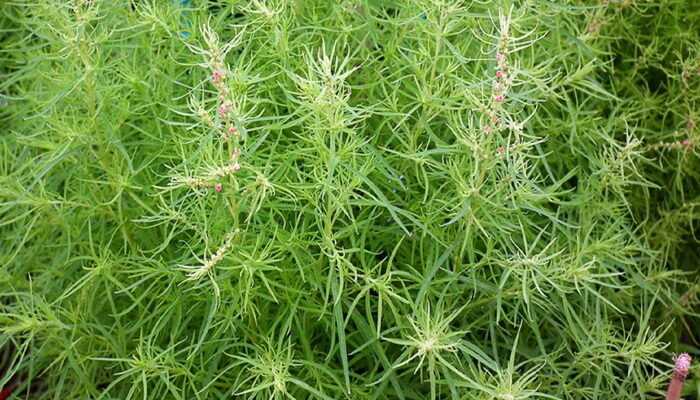
Acapulco Silver – Kokhia variety, which is a rounded bush with green foliage with a silvery sheen. With the onset of September, the leaves become shrill pink.
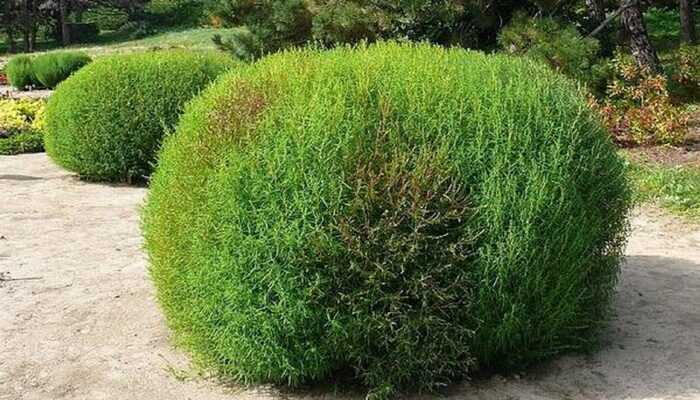
“Nephritis” – a fast-growing variety that can reach a height of 1 m in a short time. Possesses lush green foliage.
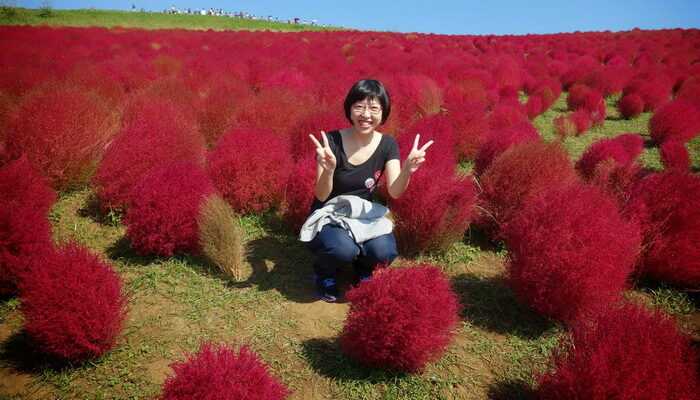
“Flame” – a bush with an elongated crown 80 cm high, sometimes higher. Leaves are narrow, linear, abundantly formed along the entire length of the shoots. At first they are green, eventually becoming burgundy. The variety is resistant to light frost.
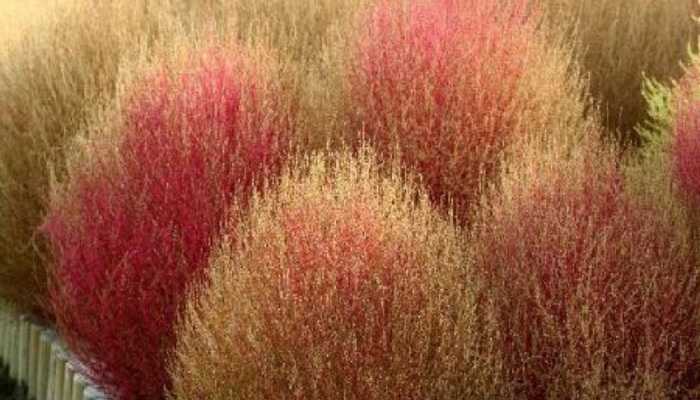
“Shilzy” – a plant with a dense crown up to 1 m high, up to 0.6 m wide. Leaves turn red at the end of summer.
Cultivation from seeds
In ornamental gardening, it is practiced to grow kochia from seeds, which are sown for seedlings in the second half of March. For this, shallow and medium-sized containers are prepared, filled with garden soil mixed with a small amount of sand. The soil is moistened with a spray bottle, the seed is scattered over its surface, trying to do it evenly, then slightly pressed.
Crops are covered with polyethylene to create greenhouse conditions. Store in a ventilated, bright room with a temperature of 18 – 21 degrees.
After the sprouts appear, the containers are transferred to a cooler place with a temperature not higher than 12 degrees and diffused light. Young plants are moderately watered and fed with nitrogen-containing mineral complexes.
When the third full leaf appears, they are transplanted separately into small pots or disposable glasses. In the last days of spring, subject to warm weather, seedlings are planted on the site, but at the same time it should reach a height of about 15 cm.
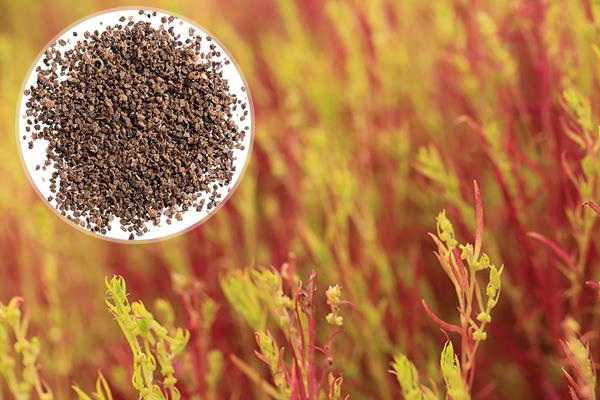
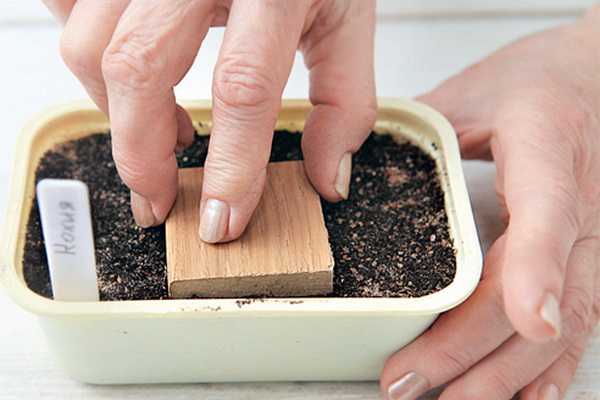
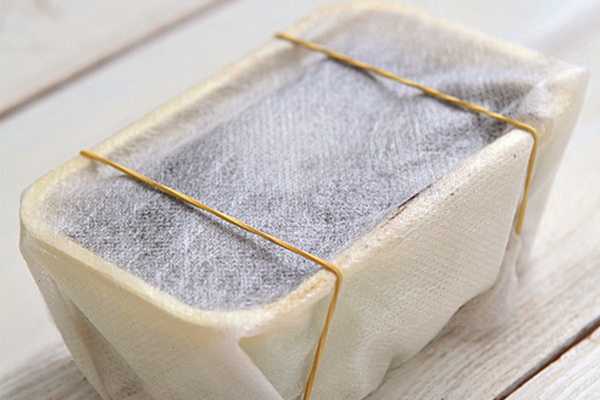
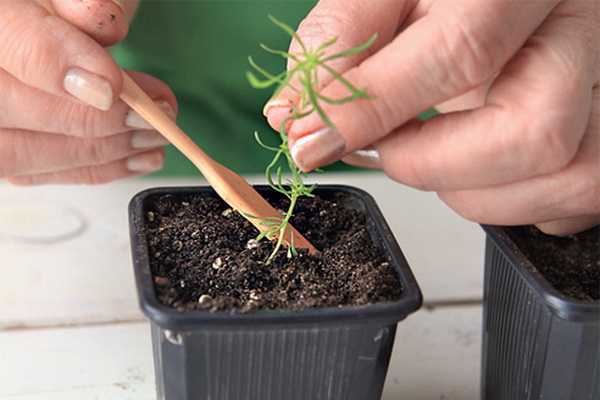
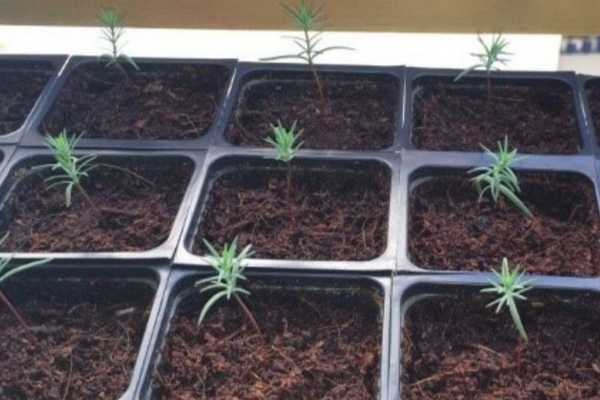
In the southern regions, the seeds of kochia are sown directly into open ground, doing this work in May, when the frosts recede, since this culture is thermophilic. When planting on a site after planting seeds in the soil, the crops are covered with a film to create greenhouse conditions and protect against possible cold nights.
After the emergence of seedlings, the film is removed, the emerging sprouts are rowed, leaving a distance of about 10 cm between them. When the seedlings grow up, they are planted in a permanent, specially designated place for them.
You can plant kochia seeds in open ground and before winter, almost before the very frosts, so that the seed does not have time to germinate. Sprouted seeds will not stand the cold and will die.
Features of landing
Before planting seedlings in a permanent place, a suitable site is selected. Empty, well-lit areas are suitable for this culture, where no shadow will fall on it. Only by getting enough light, the bushes will grow lush, with rich foliage.
For kochia, loose, air-permeable, nutrient-rich soil with neutral acidity is suitable. The land on the site is loosened, sand and ash are brought in, planting holes are made. The distance between them should be at least 40 cm so that the overgrown lush bushes do not interfere with each other, do not create a shadow.
The size of the planting holes should correspond to the diameter of the root system. Seedlings are placed in pits by transshipment together with an earthen lump, sprinkled with earth, tamped around the plant, watered.
Care
Regularity is important in caring for shrubs. Not forgetting to take care of the plant and following simple rules, the gardener will receive beautiful lush bushes, pleasing to the eye throughout the summer period until the very frost.
Watering. Trying to create optimal growing conditions for kochia, it must be borne in mind that this culture tolerates drought, but with a constant lack of moisture, the bushes will dry out, lose their splendor and brightness. The plant should be irrigated in moderation, avoiding stagnation of moisture. It is enough to carry out water procedures once a week. The healthy, attractive appearance of the bush will largely depend on this. In order to minimize watering, it is recommended to cover the area near the kohija with a layer of mulch, or overlay it with decorative stones.
Pruning. The crown of the kochia is soft and pliable. Thanks to this, you can give it any shape. In addition, pruning is necessary so that the bush does not stretch in height. Crown formation can be done at any time. The plant responds positively to this procedure, looks neat and well-groomed.
Top dressing. Fertilization is also encouraged when growing ornamental deciduous shrubs. Mineral complexes contribute to the splendor of the crown, the successful development of the plant. The first top dressing is applied 10-14 days after the emergence of sprouts. The second time this procedure is performed after 4 weeks. It is advisable to apply fertilizing with nitrogen after crown formation for active growth of green mass.
Diseases and pests. This culture is highly resistant to disease, but with improper care, it can weaken. So, excessive watering leads to stagnation of moisture and the development of root rot. To prevent this disease, you should be careful about soil moisture when growing kochia.
The most common shrub pest is the spider mite, which can attack a weakened plant. If a harmful insect is detected, the bush should be immediately treated with an insecticide solution.
By taking proper care of the kochia after planting in the open field, you can avoid the occurrence of various problems related to the health and appearance of this plant.
Application in landscape design
Lush kochia bushes have always been popular among gardeners due to their originality and ability to change color of foliage throughout the season. A plant with high decorative properties gives room for imagination. Cochia is often used in landscape design, using various compositions in combination with flowers and other beautiful plants.
A shrub with a dense pyramidal or rounded crown is indispensable for creating fences, decorating garden paths, decorating flower beds and flower beds. In addition, this crop is grown in boxes and spacious pots and displayed at the entrance to the house.
The best companions for kohija are any variegated summer flowers. The shrub looks good with snapdragons, marigolds, irises, garden daisies, asters, lilies. From several bushes of summer cypress, you can make a lush bright ensemble, especially if you plant varieties with different colors of foliage.
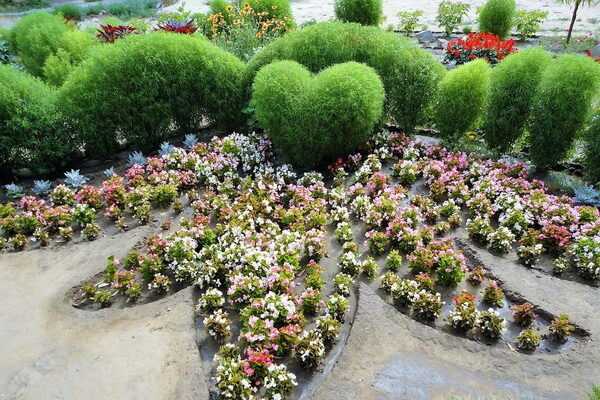
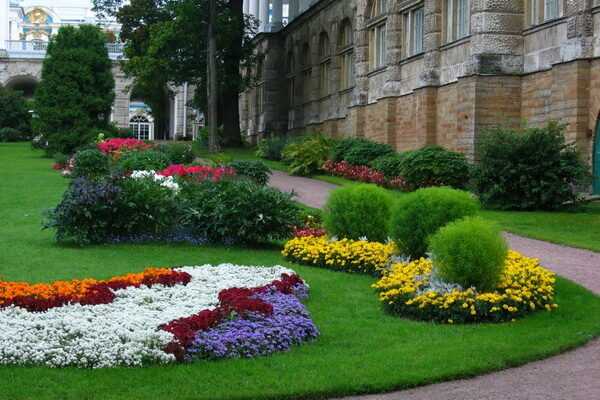
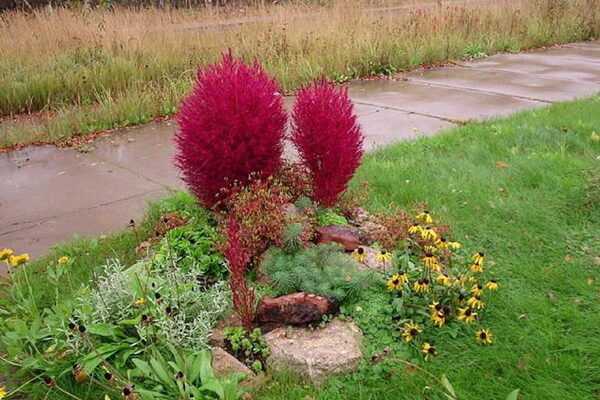
The plantings of kochia in rock gardens, against the background of boulders, and also near artificial reservoirs look beautiful. Tall varieties are successfully used for decorating outbuildings, decorating empty spaces on the site. Low-growing varieties are great for creating lawns.
Cochia is a valuable forage crop. Young leaves and shoots are used to feed livestock and silkworms raised on specialized farms.

